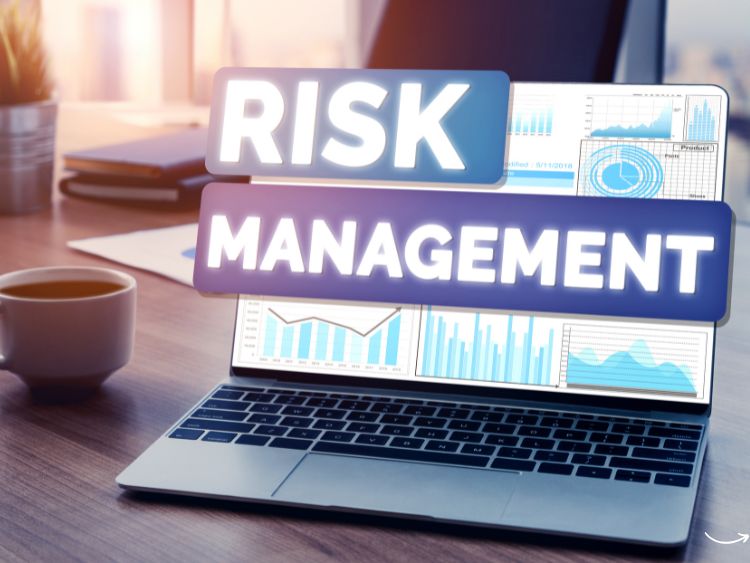Running a business is thrilling yet fraught with uncertainties. One moment, everything’s smooth sailing; the next, you’re navigating choppy waters. This unpredictability is where commercial risk management steps in. It’s like having a seasoned navigator who helps you steer clear of potential pitfalls. But what exactly is commercial risk management, and why is it crucial for your business? Let’s dive in.
What is Commercial Risk Management?
Commercial risk management involves identifying, assessing, and prioritizing risks that could potentially impact your business. These risks range from financial uncertainties, legal liabilities, technological challenges, to natural disasters. By implementing a robust risk management strategy, businesses can minimize losses, protect assets, and ensure long-term stability.
Key Elements of Commercial Risk Management
- Risk Identification: Recognize potential risks that could harm your business.
- Risk Assessment: Evaluate the likelihood and impact of each risk.
- Risk Prioritization: Determine which risks need immediate attention.
- Risk Mitigation: Develop strategies to reduce or eliminate risks.
- Monitoring and Reviewing: Continuously track and review risk management processes.
Why is Commercial Risk Management Important?
Protecting Assets and Investments
No business is immune to risks. From theft, property damage, to market fluctuations, businesses face numerous threats. A solid risk management plan protects your assets and investments, ensuring that unforeseen events don’t derail your business.
Enhancing Decision-Making
Good risk management provides valuable insights, helping businesses make informed decisions. It ensures that every decision considers potential risks and their impacts, leading to more strategic and effective choices.
Compliance and Legal Safety
Many industries have strict regulatory requirements. Effective risk management ensures that your business complies with these regulations, avoiding legal penalties and preserving your reputation.
Steps to Effective Commercial Risk Management
1. Identify Potential Risks
The first step in managing risks is identifying them. Conduct thorough assessments of your business environment. This includes internal factors like operational processes and external factors such as market trends and economic conditions.
2. Assess and Analyze Risks
Once identified, assess the likelihood and potential impact of each risk. Use tools like SWOT analysis (Strengths, Weaknesses, Opportunities, Threats) to understand how each risk could affect your business.
3. Develop Risk Mitigation Strategies
Create strategies to mitigate identified risks. This could involve diversifying investments, implementing new technologies, or changing operational processes. The goal is to reduce the likelihood of risks or minimize their impact.
4. Implement Risk Management Plans
Put your strategies into action. Ensure that your entire organization understands the risk management plans and their roles in executing them. This might involve training sessions, workshops, or regular meetings.
5. Monitor and Review
Risk management is an ongoing process. Continuously monitor the effectiveness of your risk management strategies. Regularly review and update your plans to adapt to new risks and changing business environments.
Common Risks in Commercial Risk Management
Financial Risks
Financial risks include anything that could negatively impact your business’s financial health. This might be due to market fluctuations, economic downturns, or poor financial planning. Effective financial risk management involves budgeting, forecasting, and maintaining healthy cash reserves.
Operational Risks
Operational risks stem from internal business operations. This includes equipment failures, supply chain disruptions, or human errors. Mitigating these risks often involves improving processes, investing in reliable equipment, and training staff.
Legal and Compliance Risks
Legal risks arise from potential lawsuits or non-compliance with regulations. Stay informed about laws affecting your industry and ensure your business practices adhere to them. Regular audits and legal consultations can help manage these risks.
Technological Risks
With the increasing reliance on technology, businesses face risks like data breaches, cyber-attacks, and system failures. Protect your business with robust cybersecurity measures, regular software updates, and data backup solutions.
Best Practices in Commercial Risk Management
Foster a Risk-Aware Culture
Encourage a culture where employees at all levels understand the importance of risk management. Promote open communication about potential risks and empower employees to report them without fear of retribution.
Use Risk Management Software
Leverage technology to streamline risk management processes. Risk management software can help identify, assess, and monitor risks more efficiently, providing real-time insights and reports.
Conduct Regular Training
Regular training ensures that employees are aware of the latest risk management practices and understand their roles in maintaining a safe and compliant business environment.
Establish a Risk Management Committee
Form a dedicated committee responsible for overseeing risk management activities. This committee should include members from various departments to ensure a comprehensive approach to risk management.
FAQs about Commercial Risk Management
Q: What is the primary goal of commercial risk management?
A: The primary goal is to identify, assess, and mitigate risks to protect the business’s assets, ensure compliance, and enhance decision-making.
Q: How often should risk assessments be conducted?
A: Risk assessments should be conducted regularly, at least annually, and whenever there are significant changes in the business environment.
Q: Can small businesses benefit from risk management?
A: Absolutely! Risk management is crucial for businesses of all sizes. It helps small businesses avoid potential pitfalls and ensures long-term stability.
Q: What are some common risk management strategies?
A: Common strategies include diversifying investments, implementing cybersecurity measures, training staff, and complying with legal regulations.
Q: How does risk management software help?
A: Risk management software helps by providing tools to identify, assess, and monitor risks more efficiently, offering real-time insights and simplifying the risk management process.
Summary
Commercial risk management is a vital aspect of running a successful business. By identifying, assessing, and mitigating risks, businesses can protect their assets, enhance decision-making, and ensure compliance with regulations. Implementing a robust risk management strategy involves continuous monitoring and adapting to new challenges. Remember, a proactive approach to risk management is key to navigating the unpredictable business landscape.
Authoritative Links
- https://www.iso.org/iso-31000-risk-management.html
- https://www.coso.org/Pages/default.aspx
- https://www.rims.org
- https://www.pmi.org
- https://www.erm.ncsu.edu
By following these guidelines and implementing effective commercial risk management practices, businesses can safeguard their future and thrive even in uncertain times.







